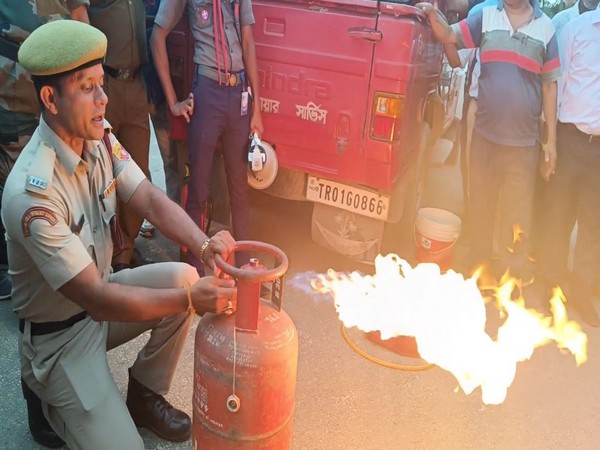Tripura: NIRD carries out resource mapping surveys in flood prone areas to mitigate economic impact
In what appears to be a significant step to mitigate the financial impact of floods, the National Institute of Rural Development (NIRD) has carried out multiple surveys to prepare maps of flood-prone areas so that local communities can be readied to tackle emergencies.

- Country:
- India
In a significant step to mitigate the financial impact of floods, the National Institute of Rural Development (NIRD) has carried out multiple surveys to prepare maps of flood-prone areas so that local communities can be readied to tackle emergencies. Elaborating further on the issue, a senior official of NIRD said that the primary objective of the exercise is to make the local community adequately trained on facing disasters like floods before the SDRF and government institutions spring into action.
Speaking exclusively to ANI, Professor NIRD Suresh Prabhu said, "Our institute works under the Ministry of Rural Development, and here we are providing off-campus training. This programme aims to build the capacity of line department officials. Officials from water resources, animal resource development, Panchayati Raj, and other line departments are participating in the training on how to manage flood-like situations." The state government selected West Champamura Gram Panchayat, which is one of the worst flood-affected zones of Tripura for carrying out the exercise.
"We are working among people to prepare the community to face the problems that arise out of floods. The government of India has already achieved disaster risk reduction, which is why seldom will you find reports of casualties due to natural calamities. Now, our focus is not on safeguarding the livestock. For instance, livestock rearing helps people to elevate their financial status," Prabhu has said. "In some cases, families come out of the below-poverty line status, but once the natural disaster strikes, they once again slip back into the poverty trap. We are now training the community on how they can safeguard their livestock from such incidents," Prabhu added.
According to the senior official, five types of maps have been prepared during the training programme, which will help the locals to mitigate the impact of flood-related issues. "The officials participating in the training collected data from as many as six wards of the village. During the survey, they came to know that there is a connectivity issue that impedes people of certain areas from reaching the town. We have taught them what livelihood options should be opted for in those extreme situations. We have drafted a resource map, vulnerability map, hazard map, and HRVC (Hazard Risk Vulnerability Capacity) map. Through these maps, they will be able to tackle the situation on their own. Instead of waiting for the SDRF and other state institutions, the community will act as the first respondent," said the official.
He also said that all families should prepare an emergency docket of documents. "Once the siren is blown, the families living in risky areas should get alerted and move to the shelters with their cattle. All the important documents such as Adhaar card, insurance policy, bank passbook, and property details should be kept in a box so that it could be moved as and when required with them," told the official. (ANI)
(This story has not been edited by Devdiscourse staff and is auto-generated from a syndicated feed.)










